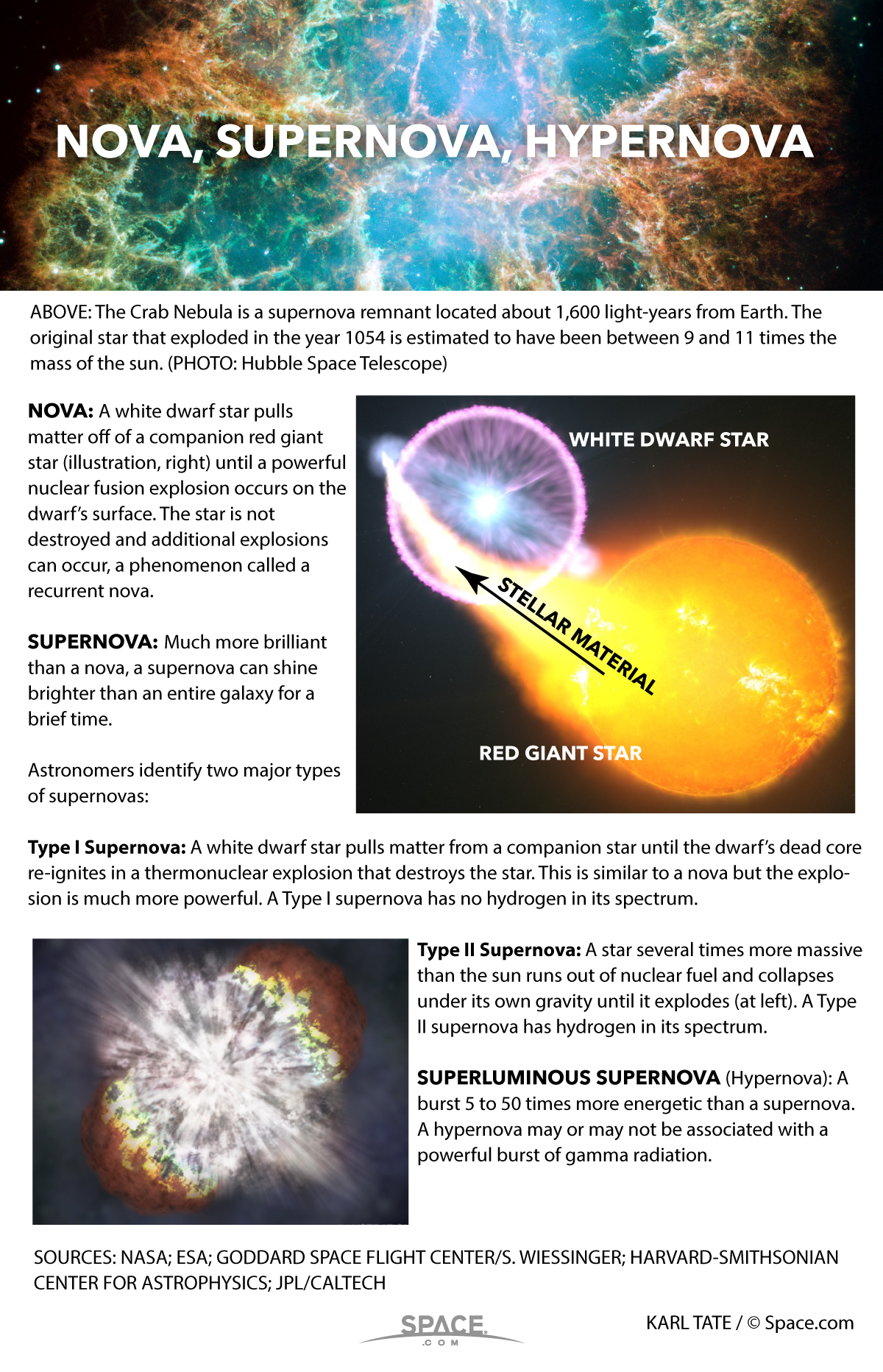Know Your Novas: Star Explosions Explained (Infographic)

NOVA: A white dwarf star pulls matter off of a companion red giant star until a powerful nuclear fusion explosion occurs on the dwarf’s surface. The star is not destroyed and additional explosions can occur, a phenomenon called a recurrent nova.
SUPERNOVA: Much more brilliant than a nova, a supernova can shine brighter than an entire galaxy for a brief time.
Astronomers identify two major types of supernovas:
Type I Supernova: A white dwarf star pulls matter from a companion star until the dwarf’s dead core re-ignites in a thermonuclear explosion that destroys the star. This is similar to a nova but the explosion is much more powerful. A Type I supernova has no hydrogen in its spectrum.
Type II Supernova: A star several times more massive than the sun runs out of nuclear fuel and collapses under its own gravity until it explodes. A Type II supernova has hydrogen in its spectrum.
SUPERLUMINOUS SUPERNOVA (Hypernova): A burst 5 to 50 times more energetic than a supernova. A hypernova may or may not be associated with a powerful burst of gamma radiation.
Join our Space Forums to keep talking space on the latest missions, night sky and more! And if you have a news tip, correction or comment, let us know at: community@space.com.
Get the Space.com Newsletter
Breaking space news, the latest updates on rocket launches, skywatching events and more!

Karl's association with Space.com goes back to 2000, when he was hired to produce interactive Flash graphics. From 2010 to 2016, Karl worked as an infographics specialist across all editorial properties of Purch (formerly known as TechMediaNetwork). Before joining Space.com, Karl spent 11 years at the New York headquarters of The Associated Press, creating news graphics for use around the world in newspapers and on the web. He has a degree in graphic design from Louisiana State University and now works as a freelance graphic designer in New York City.
